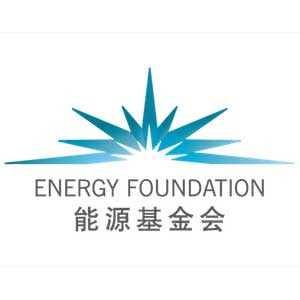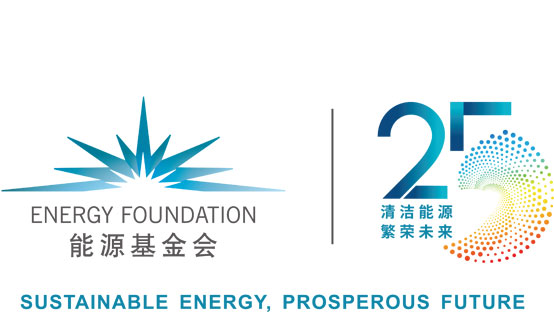A Great Leap Forward of Air Quality Control on Chinese Waters
In the second decade of the new millennium, China has gradually intensified its campaign against air pollution. As a result, clear sky over major cities like Beijing is no longer confined to windy days. While officials and experts focused their attention on vehicle and industrial emissions, there was one area that had largely been overlooked until a few years ago. Over time, ships and ports have become a significant source of air pollution in China. Currently, the country boasts seven top-10 container ports in the world, accounting for more than a quarter of global throughput. China’s port and ship emission control has been lagging behind, compared to its achievement in international trade.
Hopefully, we will see this situation getting remedied in the very near future. At the end of 2018, the Ministry of Transport issued an edict to beef up its Domestic Emission Control Area (DECA) policy. For the first time, the program extended the scope of control area to the entire Chinese coast and the major inland waterways of the Yangtze and Xi rivers. For the first time, requirements on nitrogen oxides and use of shore power appeared in the program. The government also tentatively proposed an implementation of low-sulfur marine fuel oil (sulfur content ≤0.1 percent) in parts of the waters. All of these mean that the program will clean up Chinese ships and ports in the next five years, thereby reducing smog and ozone pollution and ushering in more days of blue sky.
What’s New in the Revised Plan
In 2015, the Ministry of Transport issued the original DECA policy for waters of the Pearl River Delta, Yangtze River Delta, and Bohai Rim (Beijing-Tianjin-Hebei), focusing on the reduction of sulfur emissions. Since 2016, the program entailed the usage of marine fuel oil with sulfur content ≤0.5 percent. And it has gradually been carried out in three stages: first key ports, then all of the concerned ports, and finally all waters of the three control areas.
Since the implementation of the program a few years ago, air quality monitoring data have shown that the use of low-sulfur oil in the emission control areas has significantly contributed to reduced sulfur emissions. The concentration of sulfur oxides in port areas of Shanghai, Shenzhen, and Beijing-Tangshan dropped by 30 to 56 percent.
Compared with the 2015 plan, which is explorative in nature, the new program goes much further in the following aspects:
- The size of control area has been greatly expanded, from three separate zones to the entire coastal region and some of the inland waterways. This not only expands the geographic scope of control, but more importantly, it sets up the Chinese coastal region as a continuous control area, which will lead to more effective controls of ship emissions. In addition, the integrated control program will bring all ports into control and facilitate fair competition among them.
- The requirements for low-sulfur oils are further tightened. The new program stipulates that, starting from January 1, 2019, ships will use fuel oil with 0.5 percent or less sulfur content within 12 nautical miles of the country’s coast. And this is one year ahead of the date of such a requirement set by the International Maritime Organization (IMO). On top of this, starting from 2020 and 2022, ships entering the control areas of inland waterways and Hainan—China’s southernmost island province—need to use fuel oil with sulfur content ≤0.1 percent. This is consistent with requirements of IMO-designated Emission Control Areas in other parts of the world.
- For the first time, NOx emission standards for ships have been established. The new plan requires that newly built or refitted ships registered in China, after March 1, 2015, should meet the IMO NOx Tier II requirements and, after January 1, 2022, meet the Tier III requirements in the control areas of inland waterways and Hainan. This means the plan now amounts to the most stringent standard for ship emission of NOx in the world.
- The plan makes clear requirements on the use of shore power for berthing ships. Starting from 2019, the installation of shipborne equipment for shore power will be required for new ships. From 2022 onwards, old ships should be retrofitted with shipborne shore power systems. When ships berth for over three hours and two hours respectively in control areas, shore power should be used.
This upgraded version of the program is based on the evaluation of the old control area program and a comprehensive survey of the industry. It not only emulates from some of the strictest standards in the world, but also takes consideration of feasibility on the ground. The new plan is now much more rigorous, greatly expanding the size of control area and targeting more types of pollutants than before. In the foreseeable future, it will help bring about much better air qualities in coastal cities. But that is not to say that the new program has no more room for improvement, especially in the following three aspects:
Elevated Standards
At the international level, the IMO has approved four ECAs, which cover parts of the Baltic Sea, the North Sea, North America, and the United States Caribbean region. The full implementation of control of sulfur oxides and nitrogen oxides has been carried out in the North American ECA and the U.S. Caribbean ECA. The North American area has a control range of up to 200 nautical miles and requires fuel oil with sulfur content ≤0.1 percent and ship engines meeting Tier III emission standards. If China can implement the same stringent requirements and extend control range to 100 nautical miles, this will further reduce emissions of at least 80 percent of sulfur oxides and 30 percent of nitrogen oxides, comparing with the new plan. Doing so can effectively prevent ships from circumventing emission control by sailing just outside the 12 nautical miles area.
All-encompassing Scope
The Chinese plan on ship emission control area is only applicable to domestically registered ships, with no restrictions on foreign vessels. According to the relevant data on ocean going ships, the emissions of sulfur oxides and nitrogen oxides from Chinese ships in the Pearl River Delta oceans account for only a quarter of the total emissions. So, from the perspectives of fair competition and effective control of pollutant emissions, the control area’s requirements should apply to all vessels within it. And that is the most effective way to combating ship emissions.
An IMO-designated ECA
The country needs to submit its plan on an international emission control area by 2020. With the gradual tightening of emissions control on land-based industrial emission sources, the impact of mobile emission sources on regional and urban air quality will become more apparent and thus a key to whether the urban atmospheric environment will meet national or even WHO air quality standards in the future.
The author believes that, in keeping with its world-class shipping industry, China should complete its plan on international emission control area as soon as possible, and strive to replace the domestic emission control area with an IMO-designated version in 2025. Judging from the application process of the North American ECA, it takes about two years, from submission of the application to approval by IMO. After that, a transition period will be needed before fully implementing the control requirements on sulfur oxides and nitrogen oxides.
In view of China’s existing infrastructure, its latecomer advantages, and urgent needs, we recommended that China should submit its international ECA plan to IMO by 2020, and obtain approval before 2022. Finally, it should aim for full implementation by 2025. This timetable should allow sufficient time for the industry to be fully prepared.




